Maxon Cinema 4D 2024 review: new pyro features and more efficient working
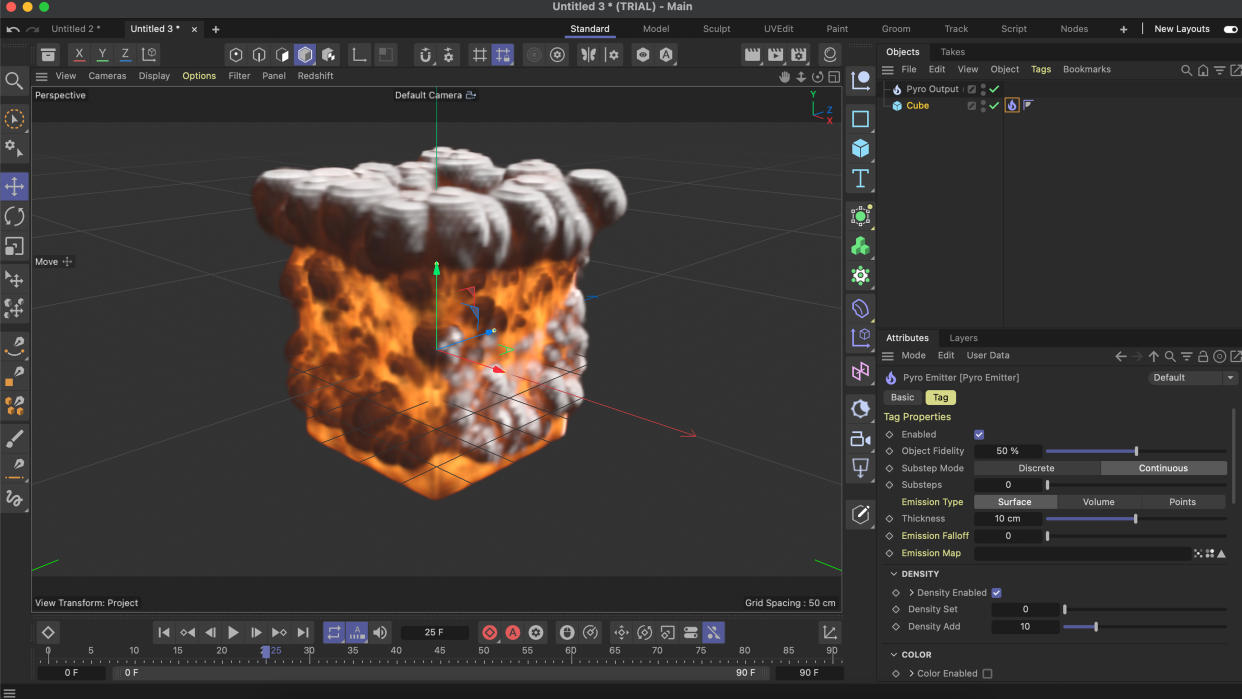
Maxon has now released version 2024 of Cinema 4D, Its flagship 3D modelling, animation, simulation and rendering software. Annual versions of Autodesk products such as 3ds Max and Maya are released around April time each year compared to later for Cinema 4D. It sits alongside all of the cross-discipline DCC heavyweights and has done well to carve out its own niche set of users. Being linked to Redshift and the wider Maxon family makes it a very appealing option for an integrated workflow. This newest release offers a number of significant new features targeted primarily at its simulation toolset.
Already a Creative Bloq favourite among the best 3D modelling software, can Cinema 4D 2024 improve on an already impressive piece of software? I tested it to find out.
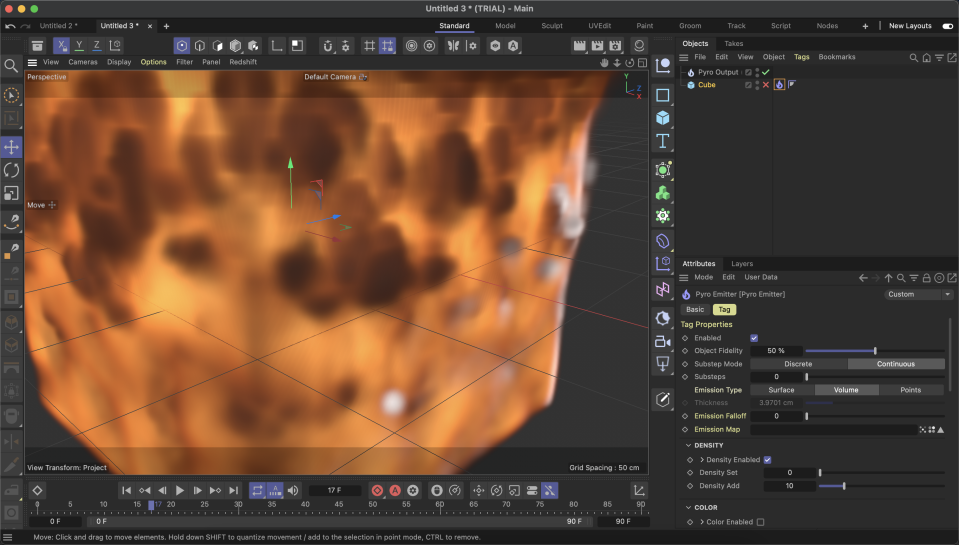
Maxon Cinema 4D review: System requirements
Cinema 4D review: General improvements
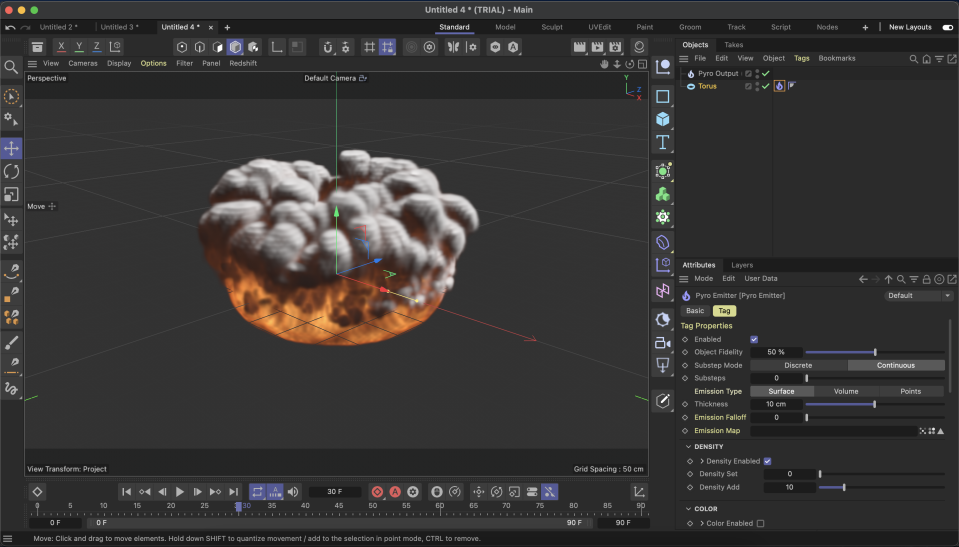
The majority of new and shiny things that constitute this release centre around simulations and we’ll come to that in a moment. Before we do though, it is worth stating that this version is more than twice as fast as previous versions. That is quite an improvement and is felt inside every area of Cinema 4D’s workflow. To historic users of Cinema 4D, it will feel like getting a new computer. That feeling of everything suddenly responding a lot quicker. These speed improvements are due to a complete reworking of the core; something that really needed attention.
It is also worth noting that the Node UI has received a total revamp. The look and feel of the interface is now much easier to look at and navigate, something that artists who are also designers very much appreciate. There is a new Notes feature which allows users to apply direct annotations to their nodal network. This is ideal for best practice but also when working in teams.
Cinema 4D review: Rigid Body Simulations and Pyro
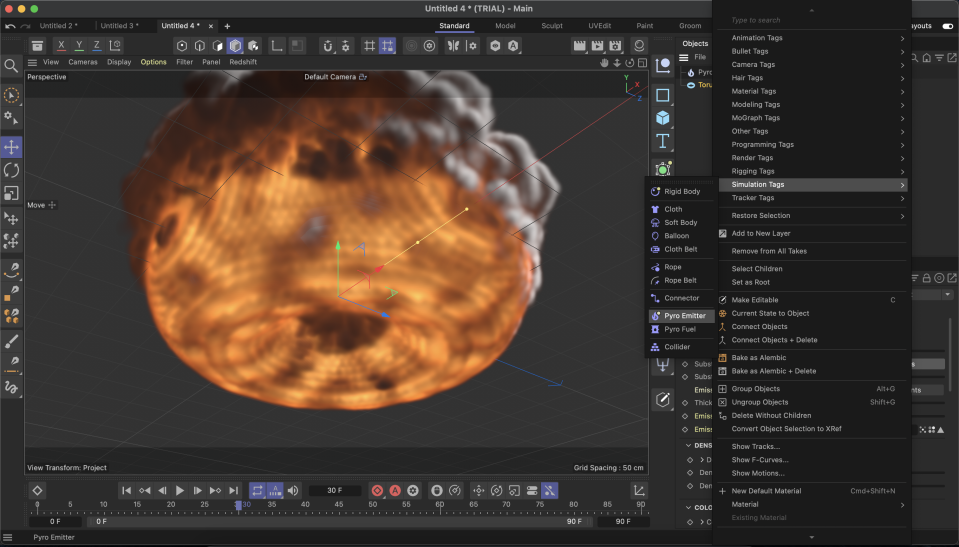
Rigid Body Simulations have finally been added into the Unified Simulation System. This means that solid objects are now able to interact with all types of simulation including pyro, cloth, and soft bodies. One of my frustrations with 3D software, in general, is that the experience of interacting with and animating objects doesn’t feel entirely intuitive. I think a significant amount of work will be carried out in this area across the industry in the years to come and this is a good start. It lays the foundation for bringing all types of objects together so that they can interact just like they would in the real world. It shouldn’t matter whether different objects have different simulation properties and now it doesn’t.
This new functionality allows animators to fine-tune and direct simulations to a degree never before possible in Cinema 4D. It is all driven by new Pyro tags which can be added to any object in the scene. This means that any object can emit pyro effects such as fire or smoke. It doesn’t matter if the thing is a piece of cloth or a soft body, every object is supported. Users can enjoy setting anything they want on fire. It is also possible to add these Pyro tags to particle emitters which makes it possible to create explosions, smoke trails and fireworks.
Everything being unified means that simulations can be created using multiple different object types, even when they are built of different simulation characteristics. This unification results in a significantly higher level of realism and removes creative barriers for those wanting pyrotechnics that impact their scenes in general.
Simulations can be carried out on both the CPU and the GPU, which alongside multi-threading, makes for a huge level of improved performance for complex simulations.
Cinema 4D review: UpRes Simulations
In support of improved simulation support, it is also possible to simulate at lower resolutions during the conception and creation process. This saves a huge amount of time and ensures that results during testing are delivered quickly and efficiently. There’s no use spending ages waiting for a simulation to render at high resolution only to find the simulation doesn’t behave as you wanted it to. It is, of course, still possible to render simulations at the highest quality when required.
Cinema 4D review: Price
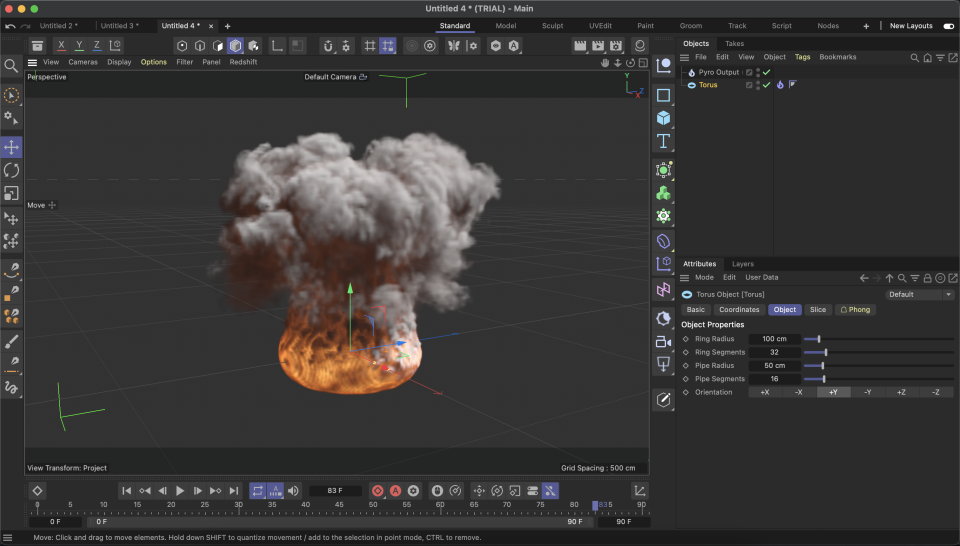
Cinema 4D continues to be fairly well priced compared to most of its competitors. Annual licenses are available at £55.10 per month. This is a reasonable amount for most users, especially for those using it on paid projects. There is also the option to purchase a license of Maxon One for £99.89 per month which gives users access to Cinema 4D, Forger, Red Giant, Redshift, Universe, and ZBrush. This is quite a bundle and at that price is a bit of a steal.
Should I buy Cinema 4D 2024?
Cinema 4D 2024 is a powerful DCC which covers a range of different disciplines very well. If you are happy with your current DCC then there’s not a huge amount in this latest release which would make you want to switch. Many of the new features are already available in the likes of 3ds Max and Maya but if you’re new to the world of 3D then Cinema 4D would be a great place to start.

